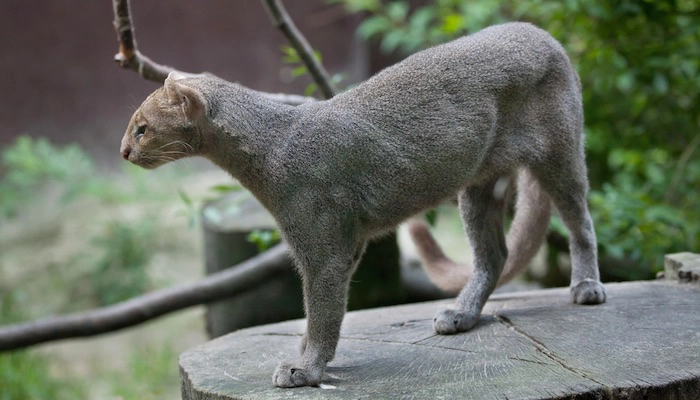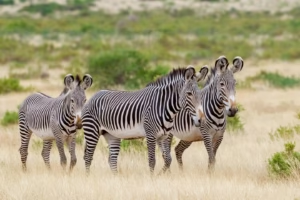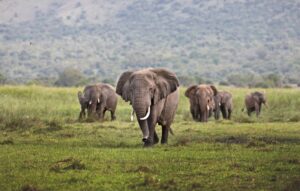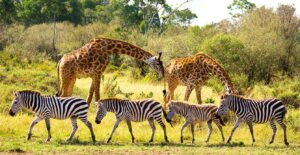Introduction to Costa Rica’s Biodiversity
Nestled between two continents and kissed by two oceans, Costa Rica is a biodiversity hotspot that punches way above its weight. This tiny Central American nation, covering just 0.03% of the Earth’s surface, hosts an astonishing 5-6% of the world’s species. From vibrant rainforests to misty cloud forests and pristine coastlines, it’s a playground for nature lovers. Among its 500,000+ species, some animals stand out for their sheer weirdness—creatures that seem like they stepped out of a sci-fi novel. Let’s dive into five of Costa Rica’s most unusual animals, where to find them, and why they’re so captivating.
The Strawberry Poison Dart Frog: Tiny, Toxic, and Technicolor
A Pocket-Sized Marvel
Imagine a frog so small it could perch on your thumbnail, yet so vibrant it looks like a living jewel. The strawberry poison dart frog (Oophaga pumilio), often called the “blue jeans frog” for its red body and denim-blue legs, is one of Costa Rica’s most iconic amphibians. These tiny creatures, measuring just 2-5 cm, pack a potent neurotoxin in their skin, a warning signaled by their dazzling colors.
Where to Spot Them
You’re most likely to encounter these frogs in the humid lowlands of the Caribbean coast, particularly in Tortuguero National Park or La Selva Biological Station. They thrive in rainforests, hopping among leaf litter or climbing low branches. Guided tours with local experts, like those offered by Milentours in Manuel Antonio, increase your chances of spotting them, as their small size and camouflage make them tricky to find.
Why They’re Unique
What makes these frogs stand out? Their ability to morph. Depending on their location, they can sport red with blue legs, green with black spots, or even navy blue. This polymorphism isn’t just for show—it’s a survival tactic, warning predators of their toxicity. Fun fact: indigenous peoples once used their venom to tip blow darts, hence the name. But don’t worry—they’re harmless to observe from a distance!
Conservation Status and Viewing Tips
- Status: Not currently endangered, but habitat loss threatens some populations.
- Best Time: Rainy season (May-November) when they’re most active.
- Pro Tip: Join a guided rainforest hike with a naturalist who can spot their subtle movements.
The Jesus Christ Lizard: The Reptile That Walks on Water
A Miracle in Motion
Ever seen a lizard sprint across a river like it’s defying gravity? Meet the Jesus Christ lizard (Basiliscus spp.), a reptile that earns its biblical nickname by “walking” on water. With lightning-fast legs and specialized toes that trap air bubbles, these lizards can skim across water surfaces at 1.5 meters per second for short bursts before diving in to swim.
Where to Find Them
Look for these green or brown marvels along rivers and streams in Costa Rica’s rainforests, such as Manuel Antonio National Park or the Sarapiquí River. The emerald basilisk (Basiliscus plumifrons), with its vivid green hue and crown-like crest, is a showstopper in the Pacific lowlands. Kayak tours through mangroves or riverbanks are prime spotting opportunities.
Why They’re Unusual
Their water-walking trick is a physics-defying spectacle. By slapping their feet rapidly against the water, they create air pockets that keep them afloat—think of it as nature’s hydrofoil. Add to that their ornate crests and vibrant colors, and you’ve got a creature that looks like it belongs in a fantasy novel. They’re also agile climbers, often seen basking on branches or darting through underbrush.
Pros and Cons of Spotting the Jesus Christ Lizard
- Pros:
- Thrilling to watch their water-running antics.
- Common in many national parks, increasing sighting chances.
- Non-aggressive and safe to observe.
- Cons:
- Their speed makes them hard to photograph.
- Best seen near water, which can limit accessibility.
The Silky Anteater: The Furry Ball of the Canopy
A Nocturnal Cuddler
Picture a fluffy, golden ball the size of a grapefruit, curled up in a tree. That’s the silky anteater (Cyclopes didactylus), the world’s smallest anteater, weighing less than a pound. With a prehensile tail and a snout like a tiny vacuum cleaner, this nocturnal mammal is a master of disguise, blending into the foliage of Costa Rica’s mangroves and rainforests.
Where to Spot Them
Your best bet is a night tour in the mangrove forests of Damas Island or the rainforests of Corcovado National Park. Local guide Milenlli “Mile” Araya Masis, a naturalist with Milentours, calls them her favorite for their rarity and cuteness. Their nocturnal habits mean you’ll need a flashlight and a keen eye to catch them foraging for ants and termites.
Why They’re Extraordinary
Silky anteaters are like living teddy bears with a purpose. Their sticky tongues flick out to slurp up thousands of ants daily, and their prehensile tails act like a fifth limb, letting them hang upside down while feeding. Unlike their larger cousins, they’re solitary and elusive, making a sighting feel like finding buried treasure.
Comparison: Silky Anteater vs. Northern Tamandua
| Feature | Silky Anteater | Northern Tamandua |
|---|---|---|
| Size | 15-18 inches, <1 lb | Up to 4 feet, 10-18 lbs |
| Habitat | Mangroves, rainforests | Forests, savannas |
| Activity | Nocturnal | Diurnal/Nocturnal |
| Diet | Ants, termites | Ants, termites, bees |
| Spotting Difficulty | High (elusive) | Moderate |
The Glass Frog: A Transparent Wonder
See-Through Skin, Big Personality
If you’ve ever wanted to peek inside a living creature, the glass frog (Hyalinobatrachium spp.) delivers. These tiny amphibians, nicknamed “Kermit frogs” for their resemblance to the Muppet, have translucent skin that reveals their beating hearts and organs. At just 2-3 cm long, they’re a marvel of nature’s engineering, blending seamlessly into the rainforest.
Where to Find Them
Glass frogs are most common in Tortuguero National Park and La Selva Biological Station, where they cling to the undersides of leaves over streams. Night tours are essential, as their camouflage makes daytime spotting nearly impossible. A guided hike with a local expert can help you locate these elusive gems.
Why They’re Bizarre
Their see-through skin isn’t just a party trick—it’s a survival mechanism. By blending into leaves, they avoid predators like birds and snakes. The males are fiercely protective, guarding their eggs until they hatch, with some species like the Hyalinobatrachium dianae carrying tadpoles to separate water droplets to prevent sibling cannibalism. It’s nature’s version of helicopter parenting!
People Also Ask (PAA) Section
- What is the rarest animal in Costa Rica?
The oncilla, a small jungle cat, is among the rarest, found in high-altitude cloud forests like Monteverde. - Where can I see glass frogs in Costa Rica?
Tortuguero National Park and La Selva Biological Station offer the best chances, especially on guided night tours. - Are poison dart frogs dangerous to humans?
While toxic in the wild, their venom is not lethal to humans through casual contact. Always observe from a distance. - What’s the best time to spot wildlife in Costa Rica?
The rainy season (May-November) is ideal for amphibians like frogs, while the dry season (December-April) is better for birds and mammals.
The Baird’s Tapir: Costa Rica’s Gentle Giant
A Prehistoric Wanderer
The Baird’s tapir (Tapirus bairdii) looks like a mashup of a pig, a horse, and an elephant, with a short, flexible snout that doubles as a snorkel. Weighing up to 875 pounds, this endangered herbivore roams Costa Rica’s forests, munching on leaves and fruit. Despite its size, it’s shy and elusive, making sightings a bucket-list moment.
Where to Spot Them
Corcovado National Park and Tenorio Volcano National Park are tapir hotspots, thanks to conservation efforts boosting their numbers. Guided tours in these remote areas, especially at dawn or dusk, maximize your chances. The tapir’s nocturnal habits and preference for dense forests make a local guide invaluable.
Why They’re Unique
Tapiers are living fossils, related to rhinos and horses, with a lineage stretching back millions of years. Their snorkel-like snout is perfect for foraging underwater or sniffing out food in the jungle. Despite their bulk, they’re agile swimmers and can even fend off crocodiles. Costa Rica’s long-running tapir conservation program is a global model, ensuring these gentle giants thrive.
Conservation Challenges and How to Help
- Threats: Deforestation and hunting have reduced their numbers to around 10,000 globally.
- How to Help: Support organizations like the Costa Rican Wildlife Foundation or choose eco-friendly tours that fund conservation.
- Fun Fact: Tapirs use their snouts to pick fruit like a tiny elephant trunk, making them key seed dispersers in forests.
Planning Your Wildlife Adventure in Costa Rica
Choosing the Right Tour
To see these unusual animals, book guided tours with reputable operators like Milentours or Asuaire Travel, which prioritize sustainable practices. National parks like Manuel Antonio, Corcovado, and Tortuguero offer tailored wildlife tours, often led by naturalists who know every nook of the jungle. Night tours are a must for nocturnal species like the silky anteater and glass frog.
Best Times to Visit
- Rainy Season (May-November): Ideal for amphibians like the strawberry poison dart frog and glass frog, as they’re more active in wet conditions.
- Dry Season (December-April): Better for spotting birds and mammals like tapirs, as they gather near water sources.
- Year-Round: Monkeys, toucans, and Jesus Christ lizards are visible in most seasons, especially in national parks.
Transactional Tips: Booking the Best Wildlife Tours
- Top Operators: Milentours, Asuaire Travel, and Costa Rica Rios offer expert-led wildlife tours. Check reviews on TripAdvisor for authenticity.
- Cost: Expect $50-$150 per person for guided day tours, with multi-day packages starting at $300.
- What to Bring: Binoculars, a waterproof camera, insect repellent, and sturdy hiking shoes.
Why Costa Rica’s Wildlife Matters
Costa Rica’s commitment to conservation—protecting 25% of its land and 30% of its oceans—has made it a global leader in biodiversity preservation. These unusual animals aren’t just quirky; they’re vital to their ecosystems. The strawberry poison dart frog controls insect populations, the tapir disperses seeds, and the silky anteater keeps ant colonies in check. By visiting responsibly, you’re supporting a model that balances tourism with nature’s survival.
A Personal Note
On my first trip to Costa Rica, I joined a night tour in Tortuguero, hoping to spot a glass frog. Our guide, a local with an uncanny knack for finding hidden critters, pointed out a tiny, translucent frog clinging to a leaf. Seeing its heart pulse through its skin felt like a magic trick. Moments like these remind you why Costa Rica’s wildlife is worth protecting—it’s a window into nature’s wild imagination.
FAQ Section
Are these animals dangerous to humans?
Most, like the glass frog and silky anteater, are harmless. The strawberry poison dart frog’s toxin isn’t lethal to humans through casual contact, but avoid touching. The Jesus Christ lizard and tapir are non-aggressive but can startle if approached. Always respect wildlife boundaries.
Where can I book a wildlife tour in Costa Rica?
Reputable operators like Milentours (milentours.com), Asuaire Travel (asuaire.com), or Costa Rica Rios (costaricarios.com) offer guided tours in national parks. Book through their websites or platforms like Viator for verified options.
What’s the best national park for spotting these animals?
Corcovado National Park is tops for tapirs and silky anteaters, while Tortuguero excels for glass frogs and poison dart frogs. Manuel Antonio is great for Jesus Christ lizards and monkeys. Each park offers unique ecosystems.
Can I see these animals without a guide?
While possible, guides vastly improve your chances. Animals like the silky anteater and glass frog are elusive, and local experts know their habitats. Plus, guides ensure you follow eco-friendly practices.
How can I support conservation in Costa Rica?
Donate to organizations like the Costa Rican Wildlife Foundation or choose eco-certified tours. Avoid feeding wildlife or buying products made from endangered species. Your tourism dollars can fund habitat preservation.
Conclusion: A Call to Explore Responsibly
Costa Rica’s unusual animals are more than just Instagram-worthy moments—they’re proof of nature’s creativity and resilience. From the water-walking Jesus Christ lizard to the see-through glass frog, these creatures invite us to marvel at the world’s diversity. Plan your trip, book a guided tour, and tread lightly to help preserve this paradise. Whether you’re peering through binoculars at a silky anteater or catching a tapir’s silhouette at dusk, Costa Rica’s wildlife will leave you awestruck.








